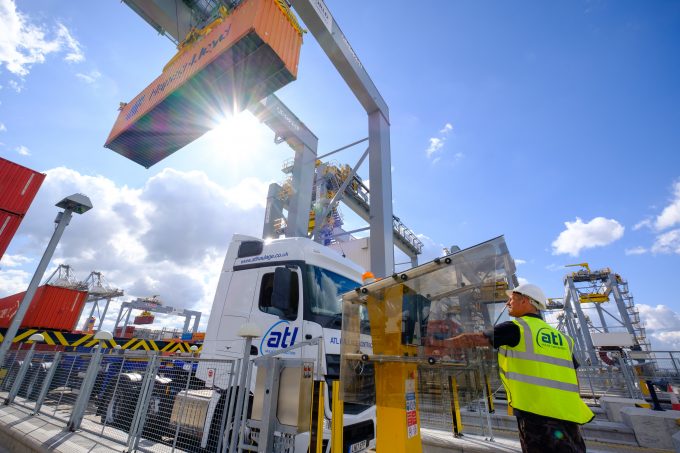The US Line: Why logistics is a great career choice
Sing it loud: The future is bright

Container haulage driver shortages are the result of a combination of shipping lines forcing hauliers to accept sky-high rates and the sale of driver services as a product you can buy off a ’haulage supermarket’ shelf.
Driver pay has been kept low through supply and demand ...
Keep our news independent, by supporting The Loadstar
Red Sea crisis has driven most new capacity into extended Asia-Europe trades
Explosions and 'out-of-control' fire reported on Wan Hai box ship
Carrier price hikes hold, driving spot rates higher as space gets scarcer
Crew forced to abandon ship in latest fire on vessel carrying EVs
The Loadstar Podcast | Transport Logistic and Air Cargo Europe 2025
Four crew members still missing as Wan Hai 503 continues to burn
Asia-West Africa ULCV deployment opens new markets for carriers

Comment on this article
Dave Holladay
July 15, 2021 at 6:01 pm40 years ago I maintained a pioneering facility, where we had a happy local haulier, with all his drivers & tractors working local rules – home at night – all breakdowns sorted with own staff &c, and sent tanks and containers with whisky from Speyside to bottling & blending plants in Glasgow … by rail
Scroll forwards and we now have the Tesco Trains (other brands are available) running scheduled daily services with up to 30 intermodal boxes at 75mph (vs 56 mph), no 45 minute (x30) breaks, with 2-3 drivers (vs 30), and major logistics operators like Malcolm Group aiming to almost eliiminate trunk haulage, with ‘local’ trip working for the final (40) mile(s)
Smarter folk also look at moving the product with a more agnostic view on the actual vehicle or mode. I was involved in early stages of IntercityRailfreight, now with a decade of proof of concept, but still stymied by the corporate inertia of the rail industry, and government – such that its been 3 years since we had initial meetings with Scotrail and Scottish Government (TS) about using the new electric trains, and 42 (39 is possible) minute Edinburgh-Glasgow service and fast final mile for premium packages (c.90% of courier deliveries in cities weigh under 30Kg)
On the retail logistics front we now have 2 operators ready to roll with refurbished 100mph commuter trains, kitted out to carry the standard wheeled ‘cage-pallets’ (6-8 trucks-worth) with train paths already pencilled in and existing/mothballed locations where these can be transferred for dispersal using vehicles better matched to the individual stores, and possibly using 1 vehicle & driver to carry out a series of 30 second load-drops/collects, with store staff unloading/loading
The intermodal approach might also look at construction, using a standard half-height 20ft box with a skeletal vehicle to import bulk materials, and ship-out waste, offering a safer loading/higher payload option to the regular 32T tipper whilst reducing the number of ’empty’ vehicle movements. These boxes can also be moved in bulk by rail or water with a basic 1-5km road haul making maximum use of a much smaller number of trucks & drivers.
There are some interesting sites – one, with a live, connected rail freight siding is under 1Km from Euston Road, and can connect with a commercial estate, which includes a Booker warehouse, and several fresh food wholesalers
In my part of the country there is a mothballed freight line closer to a retail park than some of its car parking, and another has a rail line with space for a siding along their shared boundary
Don’t ignore water either – some fairly large loads can move well inland, often using the standard ‘Euro-Barge’ sizes, that can be more quickly obtained than a bespoke vessel
Happy to discuss this with anyone interested in developing these ideas – a long career in engineering, transport problem solving but always asking what that way?
Dave Holladay
Gary Gilmore
July 18, 2021 at 1:10 pmI work any 5 from 7 days a week..1 weekend in 4 off..
Different start time every day..work every Bank Holiday..
Flexibility for the ‘Operational needs of the Business’
And I’ve got it easy!!